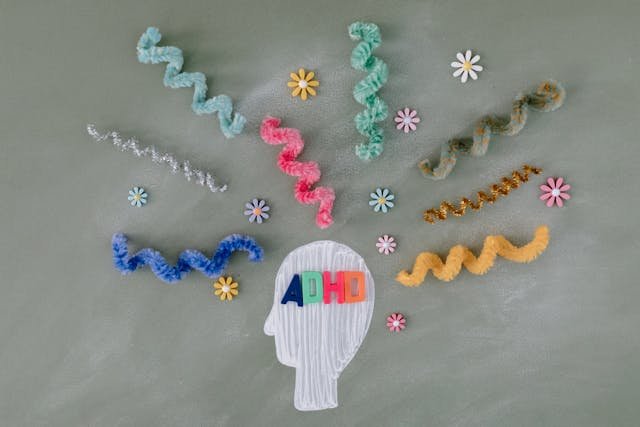Adult ADHD: Understanding and Managing Symptoms
ADHD, commonly associated with children, is a condition that can persist into adulthood for many individuals. Research shows that ADHD in adults can significantly impact work performance, relationships, and overall well-being. Despite its prevalence, many adults with ADHD go undiagnosed, leading to untreated symptoms that can contribute to anxiety, depression, and difficulties in daily functioning.
To bridge this gap in understanding, it is crucial to shed light on ADHD in adults and provide strategies for managing the condition. This comprehensive guide aims to offer readers an in-depth overview of adult ADHD, practical tips to improve daily functioning, and insights into the latest treatment options. By providing actionable advice and evidence-based insights, this guide empowers individuals to effectively manage ADHD and enhance their quality of life.
Statistics of ADHD in Adults
To grasp the extent of ADHD in adults, it is essential to consider the following statistics:
– Prevalence figures: Approximately 4.4% of American adults are currently diagnosed with ADHD, with a lifetime prevalence estimated at 8.1%. These numbers highlight that ADHD is not limited to childhood but is a lifelong challenge for many individuals.
– Gender Differences: Men are more frequently diagnosed with ADHD than women, with prevalence rates of 5.4% and 3.2%, respectively. This gender difference may stem from variations in symptom manifestation and perception.
– Ethnic and Racial Differences: Non-Hispanic white adults report higher rates of ADHD diagnoses compared to other racial or ethnic groups. This underscores the importance of equal access to diagnostic resources for all populations.
Understanding these statistics can inform advocacy efforts for inclusive and tailored care for individuals with ADHD. For further insights on ADHD in adults and effective treatment options, visit the website of Dr. Alexander Sidawi at Analyze Psychiatry.
Typical Symptoms in Adults
The symptoms of ADHD in adults encompass three main areas: inattention, hyperactivity, and impulsivity. While similar to childhood symptoms, these manifestations differ in adults.
Inattention:
– Task Completion: Starting tasks but leaving them unfinished.
– Focus: Difficulty maintaining concentration, especially with repetitive or unrewarding tasks.
– Organization: Challenges in managing schedules, deadlines, and priorities.
Hyperactivity:
– Restlessness: Feeling the need to move or fidget constantly.
– Over-involvement: Taking on excessive responsibilities due to an inability to slow down.
– Difficulty Relaxing: Feeling uneasy during relaxation activities.
Impulsivity:
– Interruptions: Speaking out of turn or interrupting conversations.
– Hasty Decisions: Making choices without considering consequences, impacting relationships and finances.
– Emotional Reactivity: Experiencing sudden mood swings or difficulty regulating emotions.
Recognizing these symptoms is crucial for seeking appropriate treatment and support for adults with ADHD.
Living with ADHD: Coping Strategies
Effectively managing ADHD involves implementing practical strategies to address daily challenges:
– Establish structured routines: Consistent schedules reduce distractions associated with ADHD.
– Use task management tools: Apps like Trello or Todoist assist in organizing tasks and tracking progress.
– Practice mindfulness: Regular meditation improves focus and emotional regulation.
– Engage in regular exercise: Physical activity boosts dopamine levels, enhancing focus and reducing symptoms.
– Communicate openly: Sharing concerns with employers, family, and friends builds a supportive network.
These strategies, coupled with professional guidance, can significantly enhance daily functioning and quality of life for adults with ADHD.
Treatments for ADHD
Several treatment options exist for managing ADHD, including pharmacological and non-pharmacological approaches. A multimodal strategy, combining medication, therapy, and lifestyle modifications, often yields the best results.
Pharmacological Treatments:
– Stimulants: Medications like methylphenidate (e.g., Ritalin) and amphetamines (e.g., Adderall) enhance dopamine levels, improving focus and reducing impulsivity. Side effects may include appetite loss, insomnia, and anxiety.
– Non-Stimulants: Alternatives like atomoxetine (Strattera) and certain antidepressants provide relief for those intolerant to stimulants, with slower onset of action.
Non-Pharmacological Treatments:
– Cognitive Behavioral Therapy (CBT): Develops skills for managing symptoms like organization and emotional regulation.
– Mindfulness-Based Therapy: Enhances attention and reduces stress.
– Psychoeducation: Educates individuals about ADHD to promote self-awareness and effective coping strategies.
In conclusion, ADHD in adults presents unique challenges that can impact various aspects of life. However, with increased awareness, practical strategies, and effective treatments, individuals can lead fulfilling lives. By addressing ADHD holistically, individuals can unlock their potential and thrive in all facets of life.
Continued research and societal understanding are vital in ensuring that adults with ADHD receive the necessary support and resources. Through a comprehensive approach to managing ADHD, individuals can effectively manage symptoms and improve their overall well-being.


